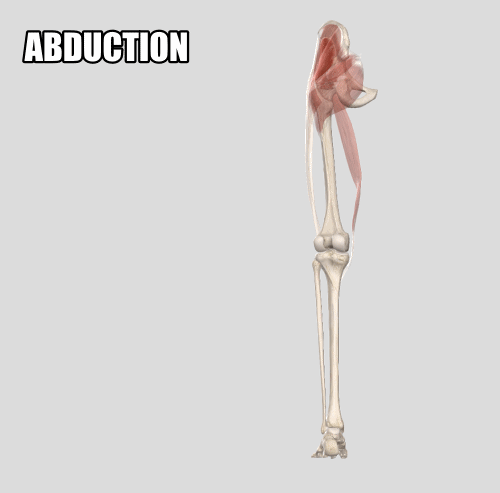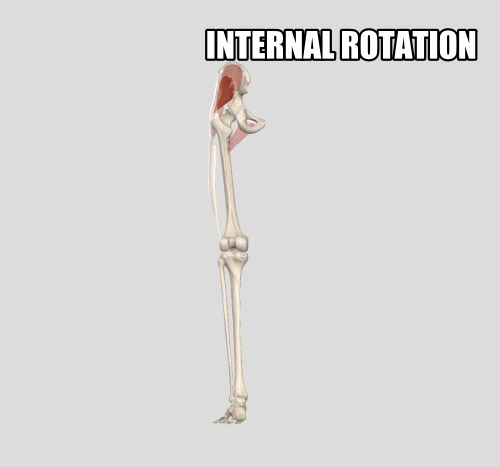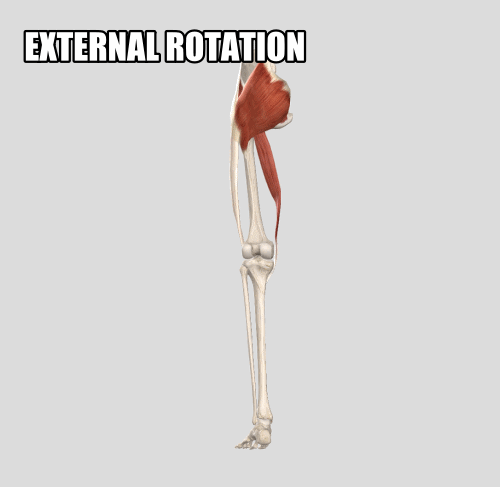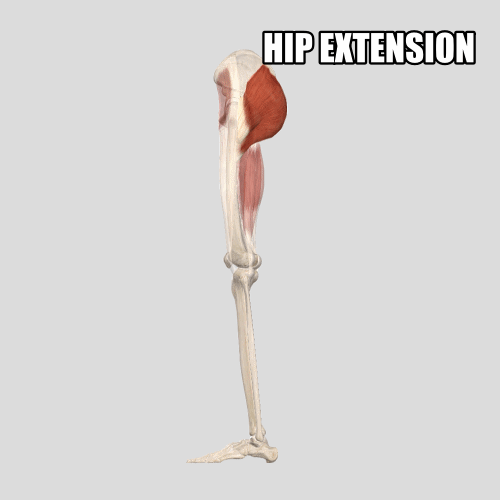Booteus Maximus (Part 1): Do Squats Really Build The Glutes?
- Danielle Hamlin

- Nov 11, 2018
- 6 min read
Updated: Apr 7, 2022
From the self-proclaimed booty-builder to the major league baseball player to the everyday workout enthusiast, everyone wants a nice looking backside. In this day and age, a bubbly pair of glutes seems to be one of the most sought-after items in the muscle department. For many, dedicating a whole workout to the gluteals has even been incorporated into their weekly split. The fitness community appears to be so obsessed with rear ends that we’ve even come up with a name to describe the style of glutes we like, #SquatBooty. However, within the last couple of weeks, there has been some controversy, calling out the term and the exercise associated with it. Claims can be seen popping up on social media stating that squats don’t actually build up the tushy muscles after all.
Well, let’s investigate!
A Quick Anatomy Lesson
In order to figure out how to workout a muscle and thus build it, we must first understand it’s location in the body and the movement(s) it is responsible for. The movement of a muscle relies solely on its point of origin and insertion. The origin point is where the muscle starts and the insertion point is where the muscle ends up. During contraction, a muscle brings its insertion closer to its origin (14). When placed over a joint, the contraction creates movement between the adjoining structures.
The Glutes
This may come as a surprise but each cheek is made up of three gluteal muscles, all playing a slightly different role in the lower, backside aspect of the body. The three muscles that we refer to collectively as the glutes include the gluteus minimus, the gluteus medius, and the gluteus maximus.
Gluteus Minimus

The gluteus minimus lies deep within the region of each cheek, snuggling right up to the outer surface of the ilium. From that point of origin, it reaches out and inserts on the femur at a spot known as the greater trochanter (2,8). In laymen terms, it starts out on the backside of our hip bones and attaches to the upper region of our thigh bones. After the quick anatomy lesson above, we now know that this means that the gluteus minimus attempts to move the femur closer to the hip bone because a muscle always brings the insertion point closer to its place of origin. Since the hip bones are angled slightly inward and the gluteus minimus is located toward the outer region of the hip bone, contraction is responsible for hip abduction and internal rotation (2).
Gluteus Medius

The gluteus medius sits right on top the gluteus minimus and looks just like its identical, but bigger, twin brother. Its place of origin is found on the outer surface of the ilium (hip bone), framing the origin of the minimus. Its insertion point is very similar to the minimus as well except it attaches on the posterolateral surface of the trochanter (more toward the backside) (2,7). Because its origin and insertion are almost identical, the movements that it is responsible for are also very identical. Contraction of the gluteus medius creates hip abduction, internal rotation, and then, as a bonus due to the insertion point and the surface area of the origin, it also creates external rotation (2).
Gluteus Maximus

The gluteus maximus is probably the best-known muscle of the gluteals. Though all three help to shape the booty, the gluteus maximus is what we typically think of when we make the claim "I like big butts!" ...which then somehow creates the inability to lie... Anyway, the gluteus maximus has three distinct points of origin. They include points on the external surface of the ilium (hip bone), dorsal surface of the sacrum (bone toward the bottom of your spine), and the lateral margin of the coccyx (tailbone). From there, the large muscle tapers down slightly and inserts on the gluteal tuberosity of the femur (outer side of the thigh bone just below the joint) (2,5,6). The glute max is responsible for hip extension and external rotation (2).
So, Do Squats Actually Build Your Booty?
The short answer... of course, they do. The squat is a compound movement and uses just about every single muscle in the lower body along with core stabilizing muscles in the trunk and even a handful of muscles in the upper body. This is why many refer to the squat as the king of all exercises and why it tends to be a staple in every good workout program.
With all of the information we just reviewed above about the three gluteal muscles, it might seem that the glute minimus and the glute medius don't really play a huge role, if any, in the squat. Let us point out that although it is not the ideal exercise for either of the two muscles, they are not completely absent from the overall operation. During the walkout phase of the squat, the gluteus minimus helps to stabilize the hips and keep them square (9). During the concentric (upward motion) portion of the squat, the gluteus medius helps to keep the knees from caving in (aka knee valgus) due to its capability to externally rotate the femur (2).
The gluteal muscle in which the squat mainly influences is, of course, the gluteus maximus. The gluteus maximus lies directly behind the hip, as we discovered earlier, and acts as the primary hip extensor (4,12,13). This means that it plays a very large role unfolding the hips as one comes up and out of the squat (4). Inversely, as one drops it low, the gluteus maximus helps to decelerate the downward motion, ensuring that you don't crash into the ground (2,3). With that said, there are a few ways you can make the squat an even more effective exercise for the gluteus maximus.
Booteus Maximus Squats
There are several different variations in squat style that can be found throughout the land of fitness. From high bar to low bar to wide stances and more, each modification of the traditional squat alters the activation of certain muscles. Luckily for us, science has an interest in our applebottoms too.
Without getting into completely different exercises (saving that for Part 2), research has shown that "sitting back" in a squat "allows the gluteus maximus to immediately become part of the lift." This is because it increases the amount of extension required by the muscle (1). Setting the bar in a low bar squat position on your back will help you with this technique. Sitting further back in the squat means that you will be leaning a bit more forward due to the bar's position within your center of mass. If you're currently squatting in the high bar position, sitting back will seem very complicated simply because you can only lean so far forward before you fall face first into the floor. Moving the bar lower on your back changes the line of force acting on the joints and makes it easier to "sit back" (10). Also, research has shown that widening your squat stance increases gluteus maximus activation significantly (11). This is likely due to the external rotation aspect of creating a wider stance.
Conclusion
In the end, it is obvious that the squat can assist you in building a booty. Though there are better ways to hit the gluteus minimus and the gluteus medius, the gluteus maximus is the biggest muscle of the three and the one that is most affected by the squat. This is because the gluteus maximus is the primary hip extensor and therefore plays a key role in both the downward and upward motion of the exercise. Hypertrophy occurs when a muscle must overcome a force from high volumes of tension. Loading up the barbell, placing it lower on your back, widening your stance, and sitting back into the squat will immediately call for the activation of the gluteus maximus. With these little tips and tricks backed by science, there's really no reason why you cant build your very own #SquatBooty.
Booteus Maximus, Part 2
In this entry, we showed you that you can indeed build up, specifically, the gluteus maximus by squatting. However, the gluteus maximus is not the only gluteal muscle. The gluteus minimus and the gluteus medius function differently from their larger musketeer and, therefore, do not reap the same amount of benefits from the squat. Coming up in part 2, we'll show you exactly how to build up the two smaller gluteals, how to further develop the maximus, and provide you with our very own, science-based Booteus Maximus workout routine. You know what they say, knowledge is power. Well, with this power comes great glutes! Meet us back here on 5/22/18 for "Booteus Maximus (Part 2): The Best Exercises for Bigger and Better Glutes."
References:
Chiu, L. Z. (2009). Sitting back in the squat. Strength & Conditioning Journal, 31(6), 25-27.
Clark, M., Sutton, B. G., Lucett, S., & National Academy of Sports Medicine,. (2014). NASM essentials of personal fitness training.
DeFOREST, B. A., Cantrell, G. S., & Schilling, B. K. (2014). Muscle activity in single-vs. double-leg squats. International journal of exercise science, 7(4), 302.
Gluteal Region & Posterior Thigh. (n.d.). Retrieved May 6, 2018, from https://web.duke.edu/anatomy/Lab13/Lab13__AZ.html
Gluteus Maximus. (n.d.). Retrieved May 6, 2018 from https://rad.washington.edu/muscle-atlas/gluteus-maximus/
Gluteus Maximus. (n.d.). Retrieved from http://www.meddean.luc.edu/lumen/meded/grossanatomy/dissector/mml/glmx.htm
Gluteus Medius. (n.d.). Retrieved from http://www.meddean.luc.edu/lumen/meded/grossanatomy/dissector/mml/glmd.htm
Gluteus Minimus. (n.d.). Retrieved from http://www.meddean.luc.edu/lumen/meded/grossanatomy/dissector/mml/glmn.htm
Gottschalk, F., Kourosh, S., & Leveau, B. (1989). The functional anatomy of tensor fasciae latae and gluteus medius and minimus. Journal of Anatomy, 166, 179–189.
Johnson, R. (n.d.). Physics of the Squat - The Physics of Powerlifting. Retrieved May 6, 2018, from http://ffden-2.phys.uaf.edu/211_fall2013.web.dir/Johnson_Ryan/physics-of-the-squat.html
Paoli, A., Marcolin, G., & Petrone, N. (2009). The effect of stance width on the electromyographical activity of eight superficial thigh muscles during back squat with different bar loads. The Journal of Strength & Conditioning Research, 23(1), 246-250.
Souza, R. B., & Powers, C. M. (2009). Differences in hip kinematics, muscle strength, and muscle activation between subjects with and without patellofemoral pain. journal of orthopaedic & sports physical therapy, 39(1), 12-19.
The Hip. (n.d.). Retrieved May 06, 2018, from https://courses.vcu.edu/DANC291-003/index_6.htmThe
Muscular System. (n.d.). Retrieved from http://www.elcamino.edu/faculty/rsidhu/Anat-30%20Compton/The%20Muscular%20System.pdf




Comments